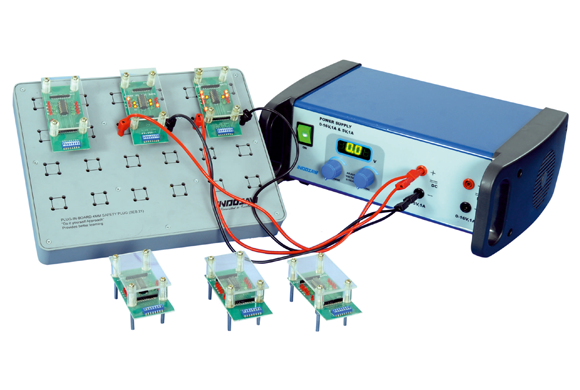
Principle and Working:
Half Adder:
A half adder is a digital circuit that adds two single-bit binary numbers and produces the sum (S) and carry (C) as output.
Full Adder:
A full adder is a digital circuit that adds two single-bit binary numbers (A and B) along with a carry input (Cin) from the previous stage, and produces the sum (S) and carry (Cout) as output.
Half subtractor:
A half subtractor is a digital circuit that performs the subtraction of two single-bit binary numbers and produces the difference (D) and borrows (B) as output.
To study BCD to 7-segment Decoder
A BCD (Binary Coded Decimal) to 7-segment decoder is a digital circuit that converts a binary-coded decimal input into a 7-segment display output. It's commonly used in digital electronics and displays to represent decimal numbers on a 7-segment display.
...
To study decade counter
A decade counter is a type of sequential logic circuit that counts in decimal (0 to 9) or binary-coded decimal (BCD) sequence. It's commonly used in digital electronics to generate timing signals, control circuits, and various applications requiring sequential counting.
To study SR flip flop
An RS flip-flop, also known as a bistable multivibrator, is a basic building block in digital logic circuits. It has two inputs, labeled S (Set) and R (Reset), and two outputs, labeled Q and Q̅ (Q-bar). The flip-flop stores a binary state (0 or 1) and can be changed based on the inputs.
To study D Flip flop
A D flip-flop, also known as a data flip-flop, is another type of sequential logic circuit commonly used in digital systems. It has a single data input (D), a clock input (CLK), and two outputs, labeled Q and Q̅ (Q-bar). The D flip-flop stores and outputs the value of the D input based on the clock signal.
To study Jk flip flop
The JK flip-flop is another type of sequential logic circuit commonly used in digital systems. It has two inputs, labeled J (set) and K (reset), a clock input (CLK), and two outputs, labeled Q and Q̅ (Q-bar). The JK flip-flop can store and change its state based on the inputs and clock signal.
To study Shift Registers
A shift register is a type of digital circuit that is used to store and shift data.
It is made up of a cascade of flip-flops, where the output of one flip-flop is connected to the input of the next.
The data is shifted from one flip-flop to the next on the rising edge of the clock signal.
Regulated Power Supply
Plug-in Modules
Plug-in Board